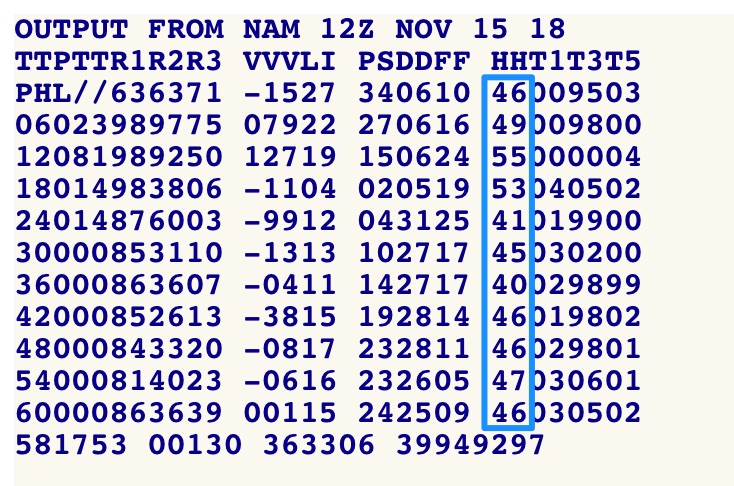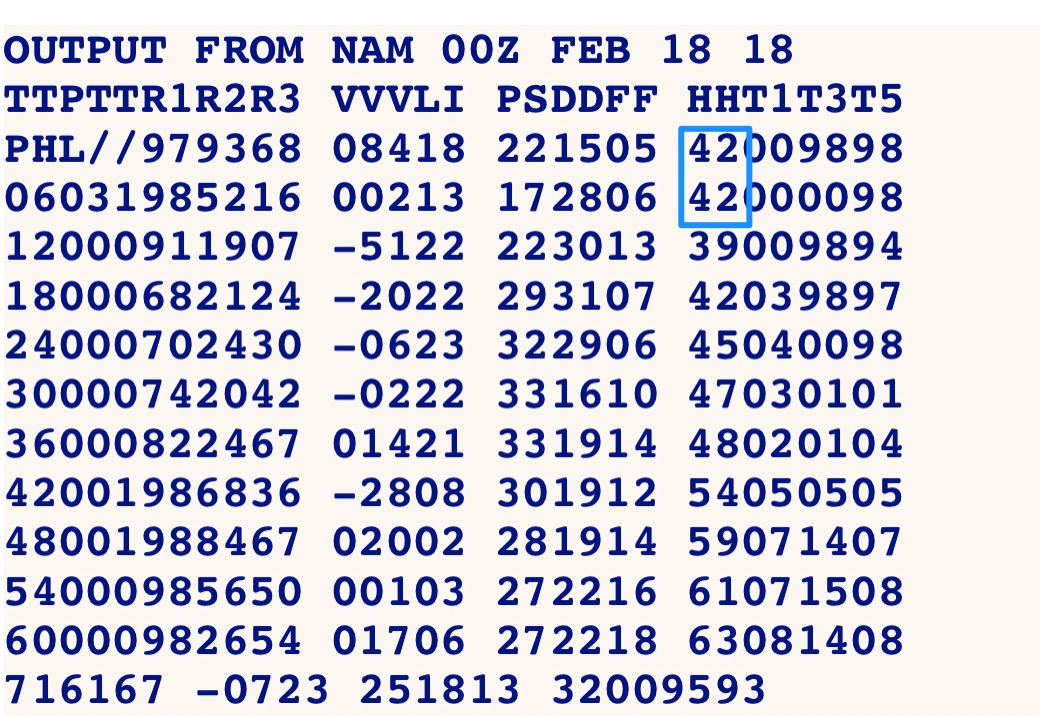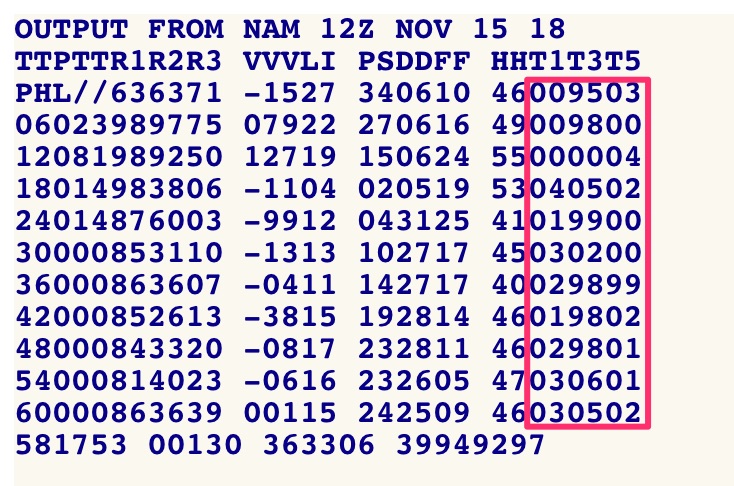With high certainty today, I had made a forecast for an immediate switch to sleet and rain. I blew it. I feel I have an obligation to explain why the forecast went wrong today.
I’m going to get technical but I’m also going to share some of my secrets for winter weather forecasts in Philadelphia. (It’s the least I can do to make up for the forecast error!)
First, I prefer the NAM model for precipitation type. I use that model almost exclusively for snow storms but also use the GFS for QPF and other things.
With the NAM, there is something called FOUS data (Forecast Output Statistics). It’s a form of tabular data that’s been available for years, even when the NAM was previously called the ETA.
The FOUS data allows a quick and incredibly powerful way of looking at a forecast for a single area, six hours at a time.
Here’s the FOUS data from this morning’s NAM model run for PHL. (I’ll explain the boxed in numbers in a moment) —
 The data is tabular and somewhat coded to allow different data to be shown using two digits in each column. The rows are 06-60 are six hour increments, starting here at 12Z (7 AM EST.)
The data is tabular and somewhat coded to allow different data to be shown using two digits in each column. The rows are 06-60 are six hour increments, starting here at 12Z (7 AM EST.)
Those who read my forecasts know that I put a lot of emphasis on upper atmospheric temperatures vs lower atmospheric temperatures. One way of estimating upper level temperatures is atmospheric “thickness” between near surface and 500 mb (18,000 feet). It’s called the 500mb thickness. (The Boxed column above.) It works out that this thickness is an indirect measure of density and temperature in the upper levels. As the thickness gets higher, the average temperature in the upper atmosphere is higher.
In Philadelphia, at or near sea level, the critical 500 mb thickness (rain vs snow) (which relates to density and ultimately temperature) is 5400 decimeters.
In FOUS data, the 5 is dropped and the last zero is dropped. In the FOUS data, 5400 dm , the 500 mb critical thickness would show in this column as 40.
Let’s cut to the chase: When the thickness is above 5400 (40) in most cases, it’s usually too warm to snow in the upper atmosphere. Today it showed 46-55!
I rarely see any exceptions to this, although it did cause a forecast error last season: We had snow last season, (4 inches) even though the FOUS thickness was 5420 (42)-

So, what happened today?
Here again is today’s FOUS, now with the lower atmosphere temperatures boxed. The actual temperature columns are at 1000, 800 and 900 mb. (the lower atmosphere.)

These temperature numbers are also ‘coded’. Here, 98 means -2 degrees celsius. So, you can see that the NAM forecast shows the lower levels at or below freezing until sometime late afternoon, (when the last number goes to 04).
[su_note note_color=”#d9f2da”]So the reason for the poor forecast- with the 500 mb thickness at 46-49, I thought it was a straight-forward forecast of too warm to snow today. (Or to use a common expression, “too big to fail”. LOL).
It works most of the time, but not today. Today, the temperatures in the lower atmosphere called the shots. [/su_note]
I’ve shared how I approach the last grouping of numbers which is a summarized way of viewing the 3D temperature profile- thickness and temperatures and precipitation type.
As I write this note (1:45 PM) , the snow is changing to rain! I knew it was going to happen eventually.
I guess the NBM is doing well!
